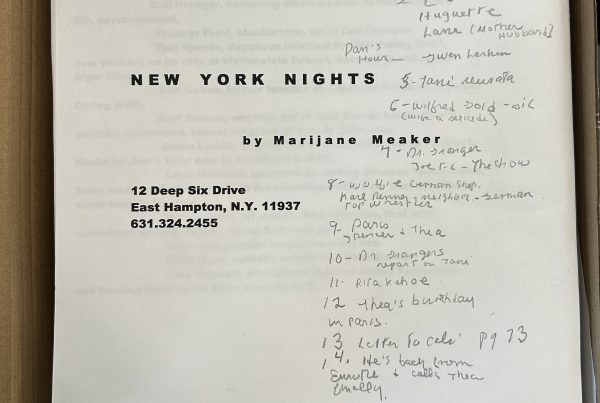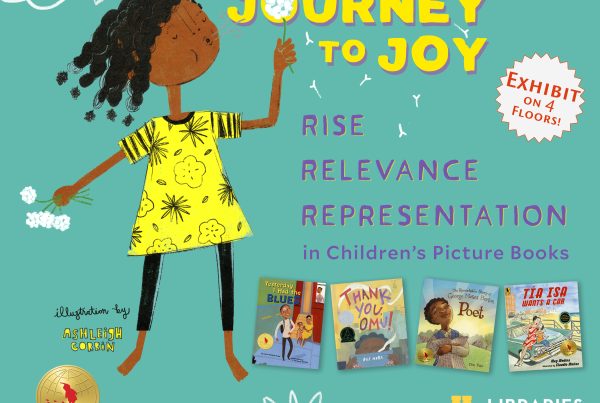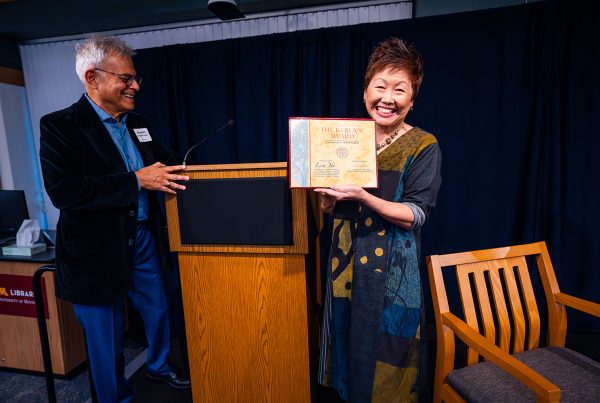 Fall schedules are filling up fast for families as students head back to school. They will begin new activities like joining sports teams, auditioning for plays, participating in study groups and doing homework. With busy days and nights ahead, independent reading can often fall by the wayside as families adjust to their new back-to-school routines.
Fall schedules are filling up fast for families as students head back to school. They will begin new activities like joining sports teams, auditioning for plays, participating in study groups and doing homework. With busy days and nights ahead, independent reading can often fall by the wayside as families adjust to their new back-to-school routines.
Lisa Von Drasek, curator of the Kerlan Collection of Children’s Literature at the University of Minnesota, answers questions about the importance of independent reading for children’s literacy development and how to make independent reading a priority this fall.
Q: What is independent reading and why is it important?
Von Drasek: We often hear how important it is for children to read independently. This is out-of-school reading time. Time to practice the reading skills they learned in school like sight words, rhyming words or a handful of phonemic awareness words — like the short a in cat, hat and bat. The best thing students can do when it comes to independent reading is practice, practice, practice. To make this happen, embrace reading habits that your child will actually enjoy. There are beneficial and fun activities that go beyond struggling alone with a worksheet, sounding out the words in a leveled reader, or slogging through that very, very sad book where the dog dies because it won an award a trillion years ago.
Q: How can families support independent reading?
Von Drasek: Choose joy! Read aloud. Often we hear about the importance of reading aloud for twenty minutes a day. Put down the stopwatch. Think sprints rather than a marathon. Poems are the perfect way to reinforce sounds and repetitions. Lucille Clifton, Nikki Grimes, Karla Kuskin, Joyce Sidman, Judy Sierra, Jane Yolen, Jack Prelutsky, Ashley Bryan, Shel Silverstein, Douglas Florian and Kristine O’Connell George are all children’s book writers whose collections will spark delight in juicy language.
Lisa Von Drasek was interviewed Aug. 23 on KSTP-TV’ Minnesota Live program.Watch Lisa on Minnesota Live
My best recommendation for raising readers is to be mindful of opportunities. Schedule weekly trips to the public library, even if there is a school library. Limited resources often mean that the school librarians are focused on supporting the curriculum. The public library may have more free reading high-interest choices like magazines and mass-market series books, comics and how-to titles.
Also, get into the habit of leaving high-interest materials around the house. Sign up for access to free books for the home with organizations like Reading is Fundamental and the Dolly Parton Imagination Library.
Model reading. Listening to an audiobook while preparing dinner or driving to soccer practice brings language and story to life.
Q: Why are back-to-school storylines helpful?
Von Drasek: Anyone who recalls their school years as unrelenting sweetness and light is suffering from amnesia. Children and young adults can happily anticipate the new school year and at the same time have feelings of anxiety and fear. Books can help. If nothing else, the giving of a book on back-to-school topics communicates to these students that they aren’t alone in having these seemingly oppositional emotions.
Q: Are there any specific books with a back-to-school setting you recommend?
Von Drasek:
Grades K-1
- “The Day You Begin” by Jacqueline Woodson, illustrated by Rafael Lopez
- Even for grown-ups, it is super scary walking into a room where you don’t know anyone. It doesn’t matter if we are five-years-old or 50, the first times are hard. Children’s Book Ambassador Jacqueline Woodson gently reminds us that we bring our unique gifts with us to every occasion and that our stories will bring us together. This book is also available in Spanish, “El Día En Que Descubres Quién Eres.”
- “We Don’t Eat Our Classmates” by Ryan Higgins
- This back-to-school treasure wins for its outrageously absurd humor. Penelope (a dinosaur) is nervous about starting school. Her mom gets her a new backpack with ponies on it. “Ponies are Penelope’s favorite. Because ponies are delicious.” Her dad packs her lunch, “three hundred tuna sandwiches and one apple juice box.”
Grades 2-3
- “A Fine Fine School” by Sharon Creech, illustrated by Harry Bliss
- What if your school had a principal who loved the school, loved the teachers and loved the students so much that he declared that school should be held on weekends and holidays and summer?
Grades 4-6
- “The Strange Case of Origami Yoda” by Tom Angleberger
- This is the perfect all-class-read school story told from various students’ perspectives. Angleberger delves into the social-emotional dynamics of a sixth grade classroom as friendships and alliances are formed. The story is both fun and heartwarming.
- “El Deafo” by Cece Bell
- Bell gives a fast, funny, and touching account of her experiences as a child with hearing loss surrounded by peers and teachers who can hear. The accessible cartoon format populated by anthropomorphized bunnies contains many of the familiar trials and tribulations of school experiences.
Grade 5-8
- “Swimming Upstream: Middle School Poems” by Kristine O’Connell George
- This collection of concise poems in a variety of formats — haiku, free verse and acrostic — express the big feelings of a sixth-grader. The confusion, loneliness and fears that accompany this big transition in schooling are handled with deft and humor. George provides the perfect mentor text for students’ own creative writing.
- “They Call Me Güero: A Border Kid’s Poems” by David Bowles
- If I was being asked for a whole family read, this is the book I would recommend. The sweet spot is seventh grade readers, but this book can also be enjoyed by fifth- through eighth-graders. Set in Texas, a seventh grade boy tells his own story, of his family, their history and their food. This book was written by a teacher for teachers. Each poem is written in a different poetic form — a gift for those looking forward to those standardized tests. It was written by a teacher for kids, all kinds of kids, teaching history, language arts, geography and culture subtly with style and grace. It was written by a teacher for families to give them an opportunity to reflect on and share their family histories — and maybe write a poem or two of their own.
High school
- “How to Love the World: Poems of Gratitude and Hope” edited by James Crews
- Crews has collected one hundred poems including the works of inaugural poet Amanda Gorman, Joy Harjo, Naomi Shihab Nye, Ross Gay, Tracy K. Smith, and others that speak directly to our hearts and serve as mentor texts for reflection and creative writing.
- “Everything Comes Next: Collected and New Poems” by Naomi Shihab Nye
- Remember what I said about leaving high-interest reading material around? Young People’s Poet Laureate Nye has collected her most popular and well-known poems in this delicious volume. Nye dedicates this volume to “All readers and writers of poems everywhere, be brave, the little things still matter most.”
Q: Can my family use the Kerlan Collection of Children’s Literature?
Von Drasek: The Kerlan Collection is an open access collection of materials related to children’s literature. Don’t forget to say hello to me when you visit the Children’s Literature Festival at the Anderson Center in Red Wing, Minnesota on Saturday, September 17 or at the Twin Cities Book Festival on Saturday, October 15. We also host public events on campus and Zoom. Go to kerlan.umn.edu for more information about our special events.
Lisa Von Drasek is the curator of the Kerlan Collection of Children’s Literature. The Kerlan, an internationally recognized resource in the field of children’s literature, contains six core collections and several smaller collections. Von Drasek has lectured on the topics of Writing Boxes: The Reading/Writing Connection in Libraries, Emergent Literacy, Diversity in Children’s Literature, Comics and Literacy, the New Adult, What Makes an Award Winning Book, and Children’s Choice Awards. She also conducts community workshops on creative writing, reading aloud and selecting books for children and young adults.





